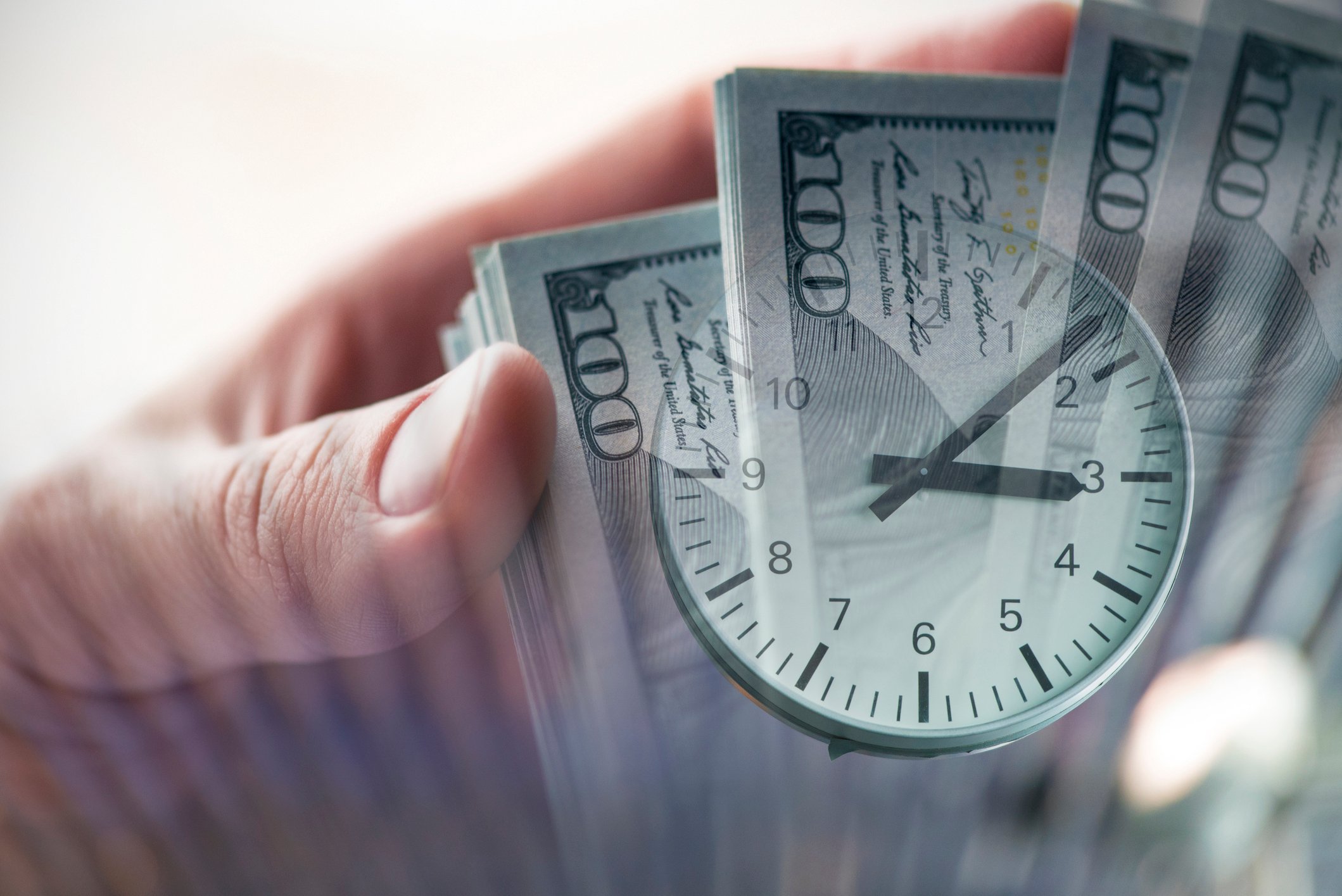If you were invested in the stock market in 2019, there's a good chance you're smiling from ear to ear. The benchmark S&P 500, which has historically returned 7% per year, inclusive of dividend reinvestment and when adjusting for inflation, gained a whopping 29% in 2019.
The big question is: Can 2020 fill the big shoes that 2019 left behind?
For investors, this becomes decision time as to where to park their money. Are generally safer larger-cap stocks a way to minimize risk, or does the high-growth potential of small-caps in a low-interest rate environment strike a chord with investors? I say, why not compromise? Mid-cap stocks (i.e., those with market caps of between $2 billion and $10 billion) usually offer faster growth rates than more mature large-cap businesses, but typically have more time-tested business models than small-cap businesses. Call it the best of both worlds.
With that being said, here are five mid-cap stocks you're going to want to own in 2020.

Image source: Getty Images.
Exelixis
Most stocks are either categorized as "growth" or "value." Cancer-drug developer Exelixis (EXEL +0.04%) is both, which is why it's the very first mid-cap stock I'm mentioning here.
Exelixis is the profitable company it is today thanks to Cabometyx, its soon-to-be blockbuster cancer drug that's approved to treat first-and-second-line renal cell carcinoma (RCC) and advanced hepatocellular carcinoma (HCC). Though worries continue to persist surrounding competition in RCC, Cabometyx is still the only second-line therapy to hit statistical significance in improvement from baseline in objective response rate, progression-free survival, and overall survival. Exelixis is also working with chief rival Bristol-Myers Squibb on late-stage combination therapies that could garner both companies increased market share in RCC.
As a cancer-drug developer, Exelixis has seen strong pricing power for its product and improved uptake as diagnostics allow for earlier detection in RCC and HCC. This has resulted in steady double-digit sales growth and a forward P/E ratio of only 19. This works out to a price-earnings-to-growth ratio of 0.43, with anything below 1 typically equating to a "value stock."

Image source: Getty Images.
New Relic
If supercharged growth is your thing, then software-as-a-service (SaaS) provider New Relic (NEWR +0.00%) is a strong consideration to own for 2020.
New Relic is a company that provides a suite of solutions that helps businesses manage their digital operations. With brick-and-mortar businesses seemingly being pushed to the wayside at a steady pace by e-commerce, New Relic's products are designed to step in and provide the tools needed for businesses to see what's working, and how effectively, with their digital platforms.
In August, New Relic's share price was clobbered after reporting a slowdown in dollar-based net expansion rate (DBNE) -- a metric measuring existing customer spending from one period to the next. The thing is, it still came it at 109%, representing an incredible amount of growth. What's more, management suggested this figure would be the DBNE trough, and it certainly appears that way, with DBNE coming in at 112% in the subsequent quarter (Q2 2020). Every metric that matters -- such as sales, number of accounts spending at least $100,000 annually, and percentage of sales from these subscription-based enterprise accounts -- is on the rise.
After consistently surpassing Wall Street profit expectations pretty much every quarter, consider me on board with the New Relic growth story.

Image source: Getty Images.
SSR Mining
Precious metals may not be popular among long-term investors, but the conditions for a significant and sustainable rally in gold and silver spot prices just about couldn't be any better right now. That's why gold and silver miner SSR Mining (SSRM +3.75%) has long been a top holding of mine, and is a core suggestion for investors to consider in 2020.
On one hand, there's the macro picture, which bodes well for SSR Mining and its peers. Precious metals benefit from low interest-rate environments given that investors may not even be able to keep pace with inflation by purchasing interest-bearing assets. As long as the Fed keeps rates well below their historic norms, and worries persist about an end to the longest economic expansion in U.S. history, gold and silver have an opportunity to thrive.
More specific to SSR Mining, it should see gold production for its flagship Marigold mine in Nevada increase by nearly 30%, from approximately 205,000 to 265,000 ounces, between 2019 and 2021. Meanwhile, the Seabee mine in Canada has produced record output every year since it was acquired in 2016, and the Chinchillas project in Argentina is ramping up to deliver significant silver production over the next decade. As one of a select few gold miners with a net-cash position, SSR Mining looks poised to reap the rewards of loftier gold and silver spot prices.

Image source: Livongo Health.
Livongo Health
As you may have noticed by now, I've beaten the drum on Livongo Health (LVGO +0.00%) a lot in the early going of 2020, and it's something I'm liable to do throughout the year.
Livongo is a company behind a suite of wirelessly connected products designed to help diabetics, prediabetics, and other folks with select chronic health conditions, live a better life. Livongo's data-centric approach aims to offer actionable tips to these chronic health sufferers to better help them monitor and manage their disease. And with there being 30 million diabetics in the U.S. in 2015, along with more than 84 million people with prediabetes, there's no shortage of opportunity for Livongo Health.
Although Livongo isn't yet profitable, the company's core metrics and business model demonstrate a world of promise. The company's enrolled diabetes patient count grew by 118% to nearly 208,000 in the most recent quarter, with clients up 121% year over year. As a subscription-based service, Livongo's product ecosystem is unlikely to lead to much churn, all while producing predictable cash flow that better helps the company plot out its growth strategy without overextending its balance sheet.
Having seen what innovative device companies can do over the long run in the diabetes space, I'm nearly convinced this is a mid-cap stock you'll want to own going forward.

Image source: Getty Images.
American Eagle Outfitters
The thought of buying any predominantly brick-and-mortar mall retailer for your portfolio might sound nauseating, but I can assure you that American Eagle Outfitters (AEO 3.36%) has been nothing like its teen-focused peers in recent years.
Having watched Aeropostale go bankrupt, and then seeing Abercrombie & Fitch struggle mightily, the takeaway could very easily be that teen-focused retailers are toast. But American Eagle Outfitters has done pretty darn well. For one, that's because its price point is in between the likes of Aeropostale and Abercrombie. Consumers buying American Eagle get brand-name clothing and accessories, but don't have to pay the A&F price point.
What's more, American Eagle's management team has always been particularly adept at clearing out unwanted merchandise. Whereas inventory issues and extended margin-crushing markdowns have plagued many of its peers, American Eagle has had fewer instances where margins have been negatively impacted over the past decade.
Following a third quarter where American Eagle reported record sales and saw its intimate clothing brand Aerie grow comparable-store sales by double digits for the 20th consecutive quarter, it's my belief that this company, and its minuscule forward P/E of nine, is a solid value here.








